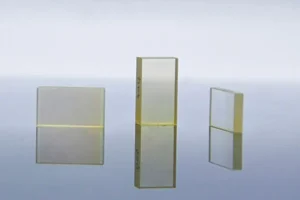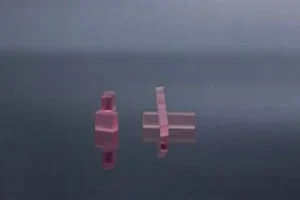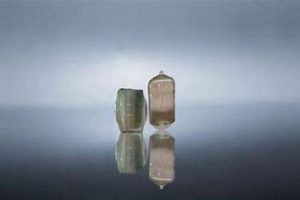Laser technology has evolved rapidly, offering new possibilities for various fields and industries. A key component that enables high-performance lasers is the Cr YAG crystal, a type of yttrium aluminium garnet (YAG) crystal doped with chromium ions (Cr4+). Cr YAG crystal has unique optical properties, making it suitable for passive Q-switching and laser gain medium applications. In this article, we will explore some of the latest advancements in laser applications using Cr YAG crystal, such as:
- Laser micromachining
- Optical communication
- Medical lasers
- Chip-scale lasers
- White light sources
What is Cr YAG Crystal?
Cr YAG crystal is a synthetic material that belongs to the garnet family of crystals. It has a cubic structure and a chemical formula of Y3Al5O12:Cr4+. The chromium ions act as saturable absorbers, which means they can absorb light at certain wavelengths until they reach saturation. When this happens, they become transparent and allow the light to pass through. This creates a mode-locking effect that generates ultra-short pulses of light.
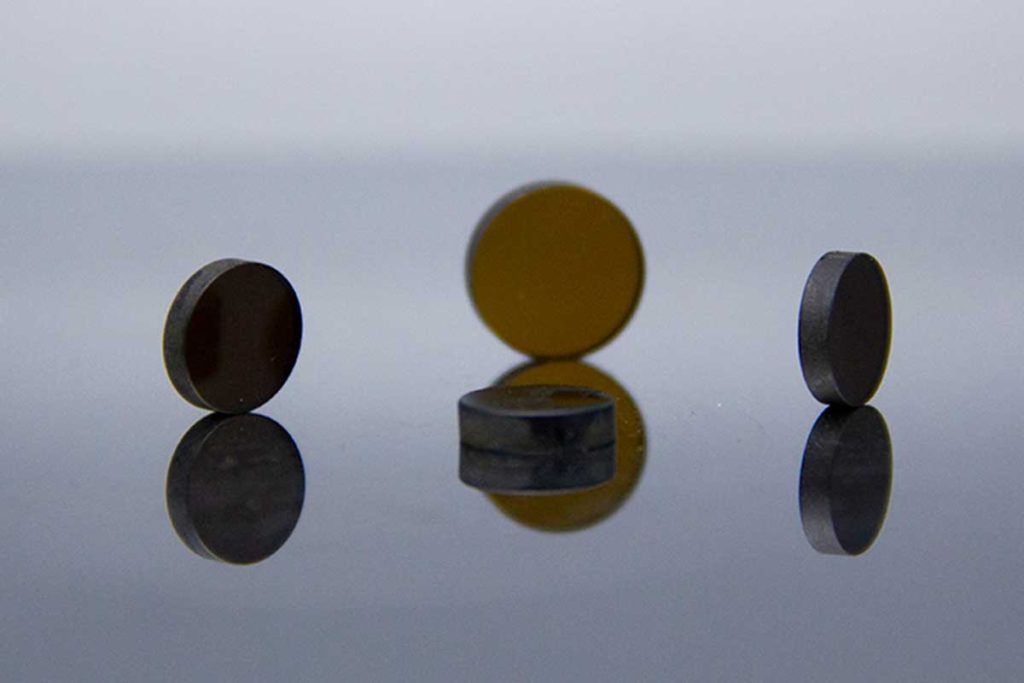
How Does Cr YAG Crystal Work as a Passive Q-Switch?
A passive Q-switch is a device that can modulate the quality factor (Q) of a laser resonator without using external control signals. Inserting a passive Q-switch into a laser cavity can achieve pulsed laser output with high peak power and short pulse duration. A passive Q-switch blocks the laser beam until it reaches a certain intensity threshold, then releases it suddenly.
Cr YAG crystal is one of the most widely used passive Q-switch materials for lasers that operate at wavelengths between 1000 nm and 1200 nm, such as those based on Nd: YAG, Nd: YLF, Nd: YVO4, and Yb: YAG. The advantages of using Cr YAG crystal as a passive Q-switch include the following:
- High damage threshold (>10 J/cm2 @1064 nm, 10 ns)
- Broad absorption band (900 nm to 1200 nm) with a peak around 1060 nm
- Low thermal lensing effect
- Good mechanical and thermal properties
- Easy fabrication and integration
How Does Cr YAG Crystal Work as a Laser Gain Medium?
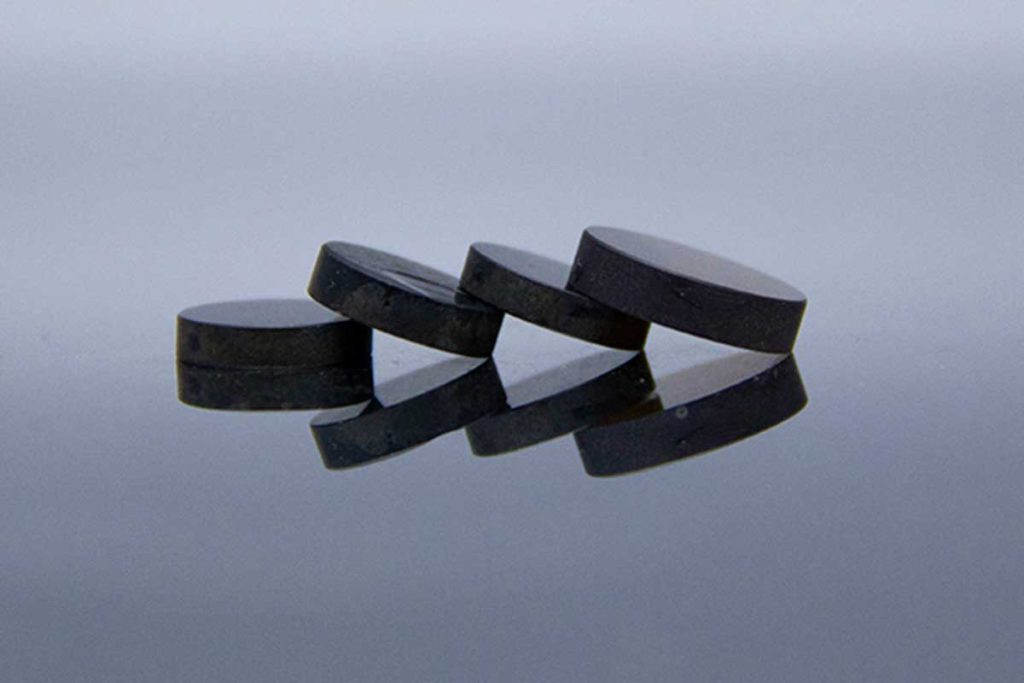
A laser gain medium is a material that can amplify light by stimulated emission. By pumping energy into a laser gain medium, one can create population inversion between two energy levels of the atoms or molecules in the material. When photons with matching energy pass through the medium, they can stimulate more photons to be emitted in phase. This process results in the amplification of light. Cr YAG crystal can also be used as a laser gain medium, producing tunable lasers with outputs adjustable between 1350 and 1550 nm.
These wavelengths are suitable for optical fiber transmission and optical amplification. The advantages of using Cr YAG crystal as a laser gain medium include the following:
- Wide tuning range (200 nm)
- High slope efficiency (up to 40%)
- Low threshold pump power (as low as 20 mW)
- High stability and reliability
What are Some Applications of Cr YAG Crystal Lasers?
Cr YAG crystal lasers have various applications in different fields, such as:
Laser Micromachining
Laser micromachining is a technique that uses focused laser beams to create microstructures on various materials. It has advantages over conventional machining methods, such as high precision, low heat affected zone, minimal waste generation, and compatibility with complex shapes and delicate materials.
Cr YAG crystal lasers can be used for passively Q-switched laser micromachining because they generate nanosecond or even subnanosecond pulses with high peak power. These pulses can ablate materials efficiently without causing thermal damage or cracking. Some examples of materials that Cr YAG crystal lasers can process include metals, ceramics, polymers, glasses, and biological tissues.
Optical Communication
Optical communication is a technology that uses light signals to transmit information over long distances through optical fibers or free space. It has advantages over electrical communication, such as higher bandwidth capacity, lower attenuation, lower interference, and lower cost.
Cr YAG crystal lasers can be used for optical communication because they provide tunable and stable light sources for optical fiber transmission and amplification. Cr YAG crystal lasers can also be used for nonlinear optical applications such as wavelength conversion, switching, and signal processing. Cr YAG crystal has a high nonlinear refractive index and a low nonlinear absorption coefficient at 1030 nm, which makes it suitable for these applications.
Medical Lasers
Medical lasers use laser beams to perform various medical procedures such as surgery, diagnosis, therapy, and cosmetic treatment. They have advantages over conventional methods, such as minimal invasiveness, high accuracy, low infection risk, and fast recovery.
Cr YAG crystal lasers can be used for medical lasers because they can generate short pulses with high peak power that can cut or coagulate tissues effectively. Cr YAG crystal lasers can also be used for photodynamic therapy (PDT), which uses light-activated drugs to kill cancer cells or bacteria. Cr YAG crystal lasers can provide tunable wavelengths that match the absorption peaks of different photosensitizers.
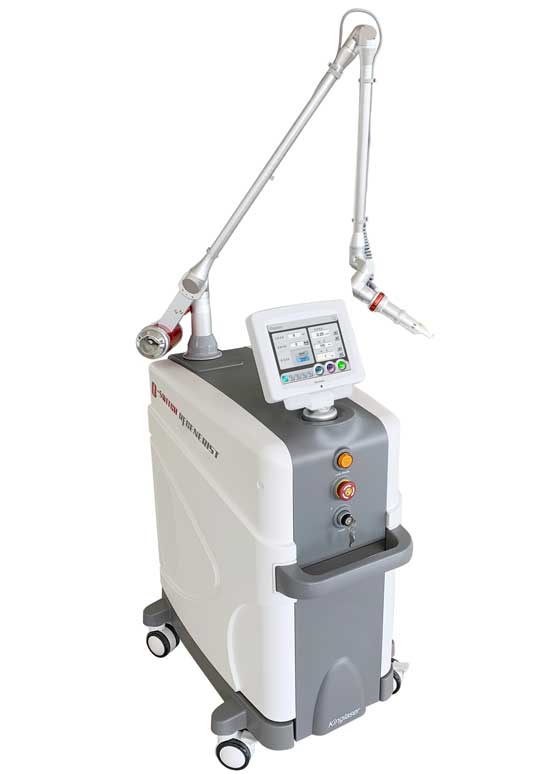
Optical Communication
Chip-scale lasers are miniaturized laser devices integrated on a single chip with other electronic or photonic components. They have advantages over conventional lasers, such as low cost, low power consumption, high integration density, and high functionality.
Cr YAG crystal lasers can be used for chip-scale lasers because they can be fabricated using microfabrication techniques such as laser-induced forward transfer (LIFT) or femtosecond laser direct writing (FLDW). These techniques can create microstructures of Cr YAG crystal on various substrates such as silicon, glass, or polymer. Cr YAG crystal lasers can also be coupled with other micro-optical elements such as waveguides, gratings, or lenses to form compact and versatile laser systems.
White Light Sources
White light sources are devices that emit light with a broad spectrum that covers the visible range. They have applications in various fields, such as lighting, display, imaging, and sensing.
Cr YAG crystal lasers can be used for white light sources because they can generate supercontinuum light by using nonlinear effects such as self-phase modulation (SPM), four-wave mixing (FWM), or stimulated Raman scattering (SRS). Supercontinuum light is a coherent white light with a wide spectral bandwidth and a high brightness. Cr YAG crystal lasers can also be combined with other laser sources, such as a blue diode or green frequency-doubled lasers, to produce white light by color mixing.
Conclusions
Cr YAG crystal is a versatile material with many laser technology applications. It can act as a passive Q-switch and a laser gain medium for various lasers. It can also enable new functionalities such as tunability, nonlinearity, and miniaturization. Some of the latest advancements in laser applications using Cr YAG crystal include:
- Laser micromachining
- Optical communication
- Medical lasers
- Chip-scale lasers
- White light sources
These applications demonstrate the potential of Cr YAG crystal to improve the performance and efficiency of existing laser systems and to create new opportunities for innovation and development.
FAQs
What is the difference between active Q-switching and passive Q-switching?
Active Q-switching is a technique that uses an external modulator, such as an acousto-optic modulator (AOM) or an electro-optic modulator (EOM), to control the quality factor (Q) of a laser resonator. Passive Q-switching is a technique that uses an intracavity saturable absorber such as Cr YAG crystal to modulate the Q factor without external control signals.
What are some advantages of passive Q-switching over active Q-switching?
Some advantages of passive Q-switching over active Q-switching are:
- Simpler design and operation
- Higher peak power and shorter pulse duration
- Lower cost and maintenance
- Higher reliability and stability
What are some disadvantages of passive Q-switching over active Q-switching?
Some disadvantages of passive Q-switching over active Q-switching are:
- Lower repetition rate and average power
- Less flexibility and adjustability
- Higher sensitivity to environmental factors
How does the doping concentration affect the performance of Cr YAG crystal?
The doping concentration affects the performance of Cr YAG crystal in terms of absorption coefficient, saturation intensity, recovery time, and contrast ratio. Generally speaking, higher doping concentration leads to higher absorption coefficient and saturation intensity but lower recovery time and contrast ratio. Therefore, the optimal doping concentration depends on the specific application and laser parameters.
How can Cr YAG crystal be integrated with other optical components?
Cr YAG crystal can be integrated with other optical components by using various techniques. These techniques can enable complex and compact optical devices based on Cr YAG crystal fabrication.
- Bonding: attaching Cr YAG crystal to another material using adhesives or thermal processes
- Coating: depositing a thin layer of Cr YAG crystal on another material using physical or chemical methods
- Growing: growing Cr YAG crystal on another material using epitaxial or heteroepitaxial methods
- Writing: creating microstructures of Cr YAG crystal on another material using laser beams or ion beams
How can I order your Cr YAG crystal products?
You can purchase our Cr YAG crystal items by contacting us through e-mail or phone. You can also see our website to search our brochure and demand a quote online. We offer competitive prices and fast delivery worldwide. I value your rate of interest in our Cr YAG crystal products!


